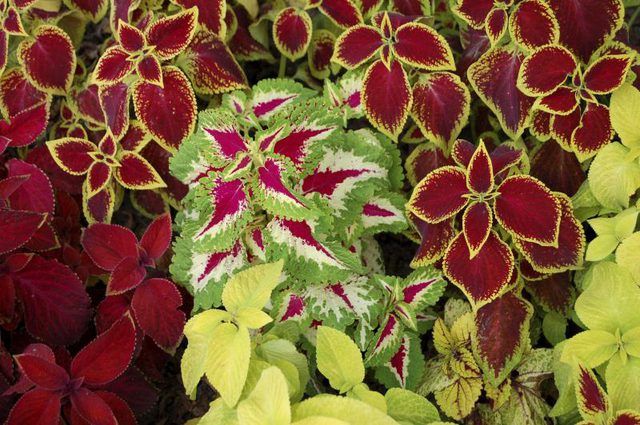Bulbs
Flower Basics
Flower Beds & Specialty Gardens
Flower Garden
Garden Furniture
Garden Gnomes
Garden Seeds
Garden Sheds
Garden Statues
Garden Tools & Supplies
Gardening Basics
Green & Organic
Groundcovers & Vines
Growing Annuals
Growing Basil
Growing Beans
Growing Berries
Growing Blueberries
Growing Cactus
Growing Corn
Growing Cotton
Growing Edibles
Growing Flowers
Growing Garlic
Growing Grapes
Growing Grass
Growing Herbs
Growing Jasmine
Growing Mint
Growing Mushrooms
Orchids
Growing Peanuts
Growing Perennials
Growing Plants
Growing Rosemary
Growing Roses
Growing Strawberries
Growing Sunflowers
Growing Thyme
Growing Tomatoes
Growing Tulips
Growing Vegetables
Herb Basics
Herb Garden
Indoor Growing
Landscaping Basics
Landscaping Patios
Landscaping Plants
Landscaping Shrubs
Landscaping Trees
Landscaping Walks & Pathways
Lawn Basics
Lawn Maintenance
Lawn Mowers
Lawn Ornaments
Lawn Planting
Lawn Tools
Outdoor Growing
Overall Landscape Planning
Pests, Weeds & Problems
Plant Basics
Rock Garden
Rose Garden
Shrubs
Soil
Specialty Gardens
Trees
Vegetable Garden
Yard Maintenance
Are Coleus Plants Perennial Flowers?
Are Coleus Plants Perennial Flowers?. Though most cultivars do flower, coleus (_Solenostemon_ spp. or _Plectranthus_ spp.) are grown for their striking foliage. They are tender perennials, typically grown as annuals outside their native Southeast Asia.

Though most cultivars do flower, coleus (Solenostemon spp. or Plectranthus spp.) are grown for their striking foliage. They are tender perennials, typically grown as annuals outside their native Southeast Asia.
Coleus Hardiness
Coleus are in danger of cold damage once the temperature drops to 30 degrees Fahrenheit. Anything below 25 degrees will kill the plant. This means that they are hardy only in U.S. Department of Agriculture plant hardiness zones 10 through 13, though they may survive in sheltered locations protected from frost in USDA zone 9b. In colder zones, they are grown as annuals or as houseplants.
Preferred Conditions
Coleus can survive in sun or shade, but different cultivars have different preferences. Full sun bleaches color out of the leaves of shade-loving coleus, and full shade makes the colors on sun-tolerant cultivars more subdued. Cultivars that grow well in shade include "Black Magic," "'Fishnet Stockings" and "Sunset." Cultivars that prefer sunny conditions include "Alabama Sunset," "Pineapple" and "Solar Shadow."
Coleus will grow in a wide range of soil conditions, including clay, sand, loam and acidic soils. However, soils high in organic matter are best, and well-drained soil is essential. Coleus grown in soggy soils have stunted growth and the leaves will turn muddy, scorched-looking and fall off the plant. Coleus shouldn't be allowed to dry out completely, though. For the first seven to 10 days after planting, water to keep the soil around the root ball moist. After that, water deeply when the top 1 inch of soil dries out.
Planting Coleus
In USDA zones 10 through 13, coleus can be planted outdoors year-round. When growing coleus as an annual in zone 9 or below, plant outside in the spring after all danger of frost has passed. They can be started indoors from seed, planting eight to 10 weeks before the last frost date in your area. Coleus seeds germinate in soil temperatures 70 to 75 degrees Fahrenheit, and take seven to 14 days to sprout. The seeds need light to germinate, so don't cover them with potting mix. When you move the plants outdoors, space them 12 to 36 inches apart, depending on the cultivar's mature size; check plant tags before planting to make sure you're giving each plant enough room.
Ongoing Care
Keep coleus plants bushy and compact by pinching off the flowers as they develop. Coleus that are grown as perennials in warm climate zones have a tendency to become leggy, so be sure to pinch-back the tips of the plants when the branches start to get too long. Compact varieties like the "Wizard" series and the cultivar "Duckfoot" require little or no pinching to maintain an attractive bushy form.
Where they are hardy, coleus can live for years, but even with regular pinching and pruning they may become unattractive and leggy after a few years. You can replace unattractive plants by taking stem cuttings. Cut a section of young stem at least 2 inches long at any time of the year, and peel off the lowest leaves. Stick the cutting in water, and pot it when it starts to grow roots.
Coleus in Containers
Coleus grown in containers can be placed indoors or out. In zones where coleus are not hardy, you can set them outside after the last spring frost and move them indoors before the first autumn frost to keep the plants alive. Like coleus grown in the ground, container coleus require well-drained soil. Since containers dry out more quickly than garden beds, coleus in containers require more frequent watering. When grown as a houseplant, place coleus in a warm location with bright light.
Fertilizer Tips
Coleus have low fertilizer requirements. For in-ground plants, fertilize every four weeks starting in early summer to encourage mid-summer growth. Three fertilizer applications will be enough for plants grown as annuals, but perennials can be fertilized into early fall when the temperatures start to cool. Use a liquid fertilizer at half the usual strength. For example, mix a concentrated liquid fertilizer with an N-P-K ratio of 12-4-8 at a ratio of 1 teaspoon fertilizer per 1 gallon of water. This will cover 20 square feet of garden space.
When fertilizing container plants, use the same concentrated liquid fertilizer as for in-ground coleus. Mix 1/2 teaspoon with 1 gallon of water and apply it to the potting soil in place of a regular watering every two weeks during the growing season.